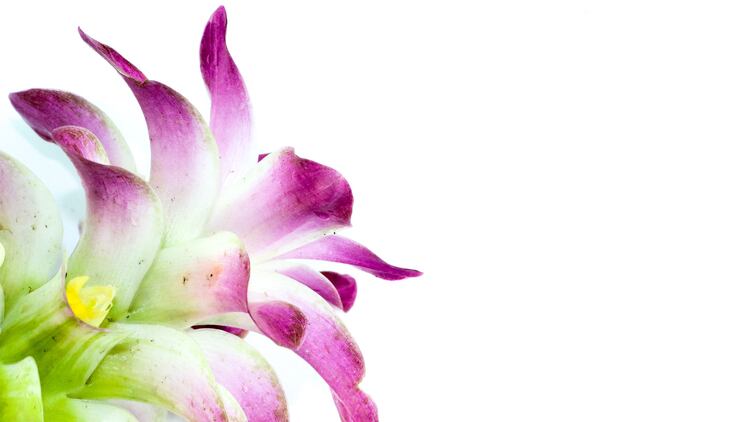Original research titled “Curcuma aromatica and Curcuma comosa Extracts and Isolated Constituents Provide Protection against UVB-Induced Damage and Attenuate Matrix Metalloproteinase-1 Expression in HaCaT Cells”, published in the journal Cosmetics, has demonstrated that the extracts could reduce the impact of UVB leading to collagen degradation and possibly regulate cell proliferation.
The study has been claimed to be a pioneering work on the potential of Curcuma aromatica and Curcuma comosa on UVB-induced photoageing and cell proliferation.
“Although Curcuma aromatica and Curcuma comosa are known to possess several biological activities, knowledge of their skin anti-ageing potential is still ambiguous, and no previous studies have been performed to investigate their abilities to preserve against UVB-induced human cells. Therefore, the present study of the effect of Curcuma aromatica and Curcuma comosa extracts, together with their isolated constituents on UVB-induced expression, cell proliferation and cell cycle profile in cells can be potentially beneficial for anti-ageing products,” said the researchers.
Brief history
Historically, the Curcuma aromatica and Curcuma comosa plants, belonging to the Zingiberaceae family, are widely distributed in China, Japan, and South East Asia. The Curcuma aromatica rhizomes are generally used in traditional medicines and topically, in combinations with astringents, bitters and aromatics, to treat various issues, like bruises, skin eruptions and infections. It is also believed to improve complexion, promote wound healing and contains other properties, such as anti-microbe, anti-tumour, anti-inflammatory and antioxidant.
On the other hand, the Curcuma comosa rhizomes were used to treat flatulence and gynaecologic issues, like PMS, irregular menstruation and uterine discomfort. In South East Asia, the plant is an active ingredient in many traditional remedies for women.
Method
For the current study, the scientists collected the rhizomes of the Curcuma aromatica from the Sawang Daen Din district of the Sakon Nakhon province in northern Thailand, whereas the Curcuma comosa rhizomes were collected from the Kamphaeng Saen district of the Nakhon Pathom Province in central Thailand in January 2020. The rhizomes were separately processed to obtain the pure extract. Their phenol and antioxidant contents were calculated. In the study protocol, the human cells were seeded into petri dishes, added extract serums and irradiated. There was a control group without serum too.
Unearthing potential
The researchers found that the two extracts exerted protective activity against UVB irradiation in human cells by analysing the secretion of the collagen substance matrix metalloproteinase-1.
The team pre-treated samples with extracts and irradiated them. Results showed that the secretion dramatically increased in UVB-irradiated cells in the control group than in the non-irradiated cells. However, treatment with Curcuma aromatica extracts markedly inhibited UV-induced secretions. Curcuma comosa extracts also decreased the level of secretions. Hence, the team said that the prevention of UVB-induced skin damage caused by collagen breakdown could be attributed to a reduction in the overexpression of the secretions.
After irradiation, the human cells were also tested for cell proliferation with specific concentrations of Curcuma aromatica and Curcuma comosa extracts. The total number of viable cells was calculated – the control group had significantly reduced numbers than the treated groups. Groups treated with the extracts and later irradiated showed markedly enhanced cell proliferation. This result suggested that the extracts could prevent UVB-inhibited cell proliferation.
Upon further analysis, the Curcuma comosa extract mainly contains phenolic components that could neutralise free radicals and provide more potent antioxidant activity. Overall, it showed higher activity than the Curcuma aromatica extract. In contrast, the Curcuma aromatica extract is rich in terpenoids, which are non-phenolic compounds. However, both extracts exhibit less activity than the well-known antioxidant, ascorbic acid.
“Hence, the Curcuma aromatica and Curcuma comosa extracts and their isolated constituents may serve as potential candidates for the prevention of skin photoageing. However, further studies are necessary to elucidate the signalling pathways and molecular mechanisms involved in the anti-photoageing activity of these agents,” said the team.
The Agricultural Research Development Agency and the Science Achievement Scholarship of Thailand, under the Ministry of Higher Education, Science, Research and Innovation, supported the research. There was also partial support from Ramkhamhaeng University.
Source: Cosmetics
“Curcuma aromatica and Curcuma comosa Extracts and Isolated Constituents Provide Protection against UVB-Induced Damage and Attenuate Matrix Metalloproteinase-1 Expression in HaCaT Cells”
Authors: Pabuprapap Wachirachai et al.
Healthy ageing, protein and probiotics are major focus areas of our upcoming Growth Asia Summit in Singapore from 11 to 13 October. Check out big-name brands, international experts and pioneering start-ups slated to present here.

